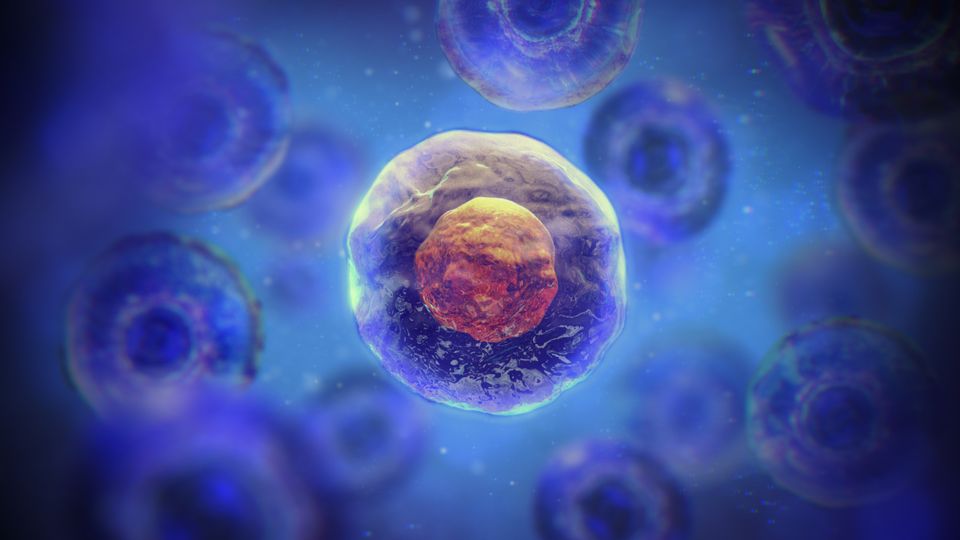Protein Engineering for Next-Generation CAR T Cell Therapies
Michael Traxlmayr shows how protein engineering is creating safer, smarter CAR T cell therapies.

CAR T cell therapy has revolutionized cancer treatment, but its clinical success is tempered by challenges in safety, specificity and control.
Speaking at Technology Networks’ recent “Landscape of Cancer Research: Advances in Immuno-oncology 2025”, Dr. Michael Traxlmayr of BOKU University, Austria, detailed how advanced protein engineering can create “new Lego blocks” for CAR T cells – custom-built molecular tools that improve tumor targeting, reduce toxicity and enable small-molecule control.
“Just imagine you’re playing Lego, and now you can create your own blocks with new properties. That’s what we do for CAR T cells,” Traxlmayr summarized.
From modular design to custom components
Chimeric antigen receptors (CARs) are synthetic proteins assembled from antibody-derived targeting domains, transmembrane regions, and intracellular signaling motifs. Traxlmayr described the field’s evolution from first-generation CARs – effective at killing target cells but lacking persistence – to second-generation designs that incorporate co-stimulatory domains for proliferation and durability.
Protein engineering now enables researchers to go beyond rearranging existing “blocks” to creating entirely new ones. These can be tailored to address limitations in efficacy, specificity and safety.
Switching CAR T cells on and off
One major innovation from Traxlmayr’s group is the development of small-molecule-regulated CAR T “switches.” By splitting a CAR into two separate protein chains – one with the antigen-binding domain, the other with the signaling domain – the T cell remains inactive until a small molecule induces their assembly.
“It’s not like a small-molecule drug you can stop taking. CAR T cells can persist for years. Having a functional control mechanism in vivo would be a major improvement,” he said.
The lab’s retinol binding protein 4-based switch uses a human lipocalin protein that changes conformation upon binding a specific, orally available drug (1120). An engineered binder recognizes only the drug-bound form, enabling precise CAR activation.
Caffeine-responsive cars
Traxlmayr’s team have also built a caffeine-responsive CAR switch. Derived from a camelid nanobody that dimerizes in the presence of caffeine, the system was re-engineered to form heterodimers only when caffeine is present, eliminating background activation.
In vitro, these CARs stayed inactive at caffeine levels typical of people avoiding the compound, but activated at concentrations achievable after a single cup of coffee. In mouse lymphoma models, caffeine administration robustly triggered tumor control.
“We can regulate CAR T cell activity in vivo in mice just via simple administration of caffeine,” Traxlmayr said.
Stabilizing a critical antigen: CD19
CD19 is the most widely targeted antigen in CAR T therapy for B-cell malignancies, yet its extracellular domain is unstable and difficult to produce. Traxlmayr’s lab used directed evolution to identify “superfolder” CD19 variants with just three-point mutations that greatly improve stability while maintaining wild-type binding affinity.
These variants enable:
- Precise affinity measurements for CAR constructs.
- Patient monitoring, using labeled CD19 to detect CAR T cells in blood samples.
- Structural studies, as demonstrated by collaborators who solved the cryo-EM structure of a clinical CAR’s scFv bound to CD19.
MiniCAR platform: Smaller, smarter binding domains
Most CARs use single-chain variable fragments (scFvs) derived from antibodies, but these can mispair, cluster and cause tonic signaling or immunogenicity. Traxlmayr’s team designed the MiniCAR platform – small, single-domain human binding modules selected for stability, expression and low background signaling.
Screening yielded binders to multiple antigens, including CD22, with picomolar affinities. In vitro and mouse models showed MiniCAR-based constructs matched or exceeded the potency of scFv-based CARs.
Targeting tumor-specific receptor conformations
In solid tumors, many “tumor-associated” antigens are also present on healthy tissues, leading to off-target effects. To address this, the lab engineered a binder that recognizes only the active, ligand-bound conformation of EGFR – common in tumor environments due to high ligand secretion.
CAR T cells armed with this binder activated only in the presence of both EGFR and its ligand EGF, potentially increasing tumor specificity and reducing toxicity.
Clinical and translational outlook
Traxlmayr acknowledged that scaling these technologies for clinical use requires careful validation. Specificity, immunogenicity and small-molecule safety all need to be addressed before translation. Yet the modularity of the engineered components offers broad applicability across targets and disease contexts.
“There are lots of very exciting applications for protein engineering in the CAR T cell field,” he concluded.
From drug-controlled “on/off” switches to next-generation binding domains, Traxlmayr’s work exemplifies how protein engineering can transform CAR T therapy from a powerful but blunt instrument into a highly tunable, precise treatment platform. As these innovations progress toward the clinic, they may redefine how and when engineered T cells are used in cancer and beyond.
This content includes text that has been generated with the assistance of AI. Technology Networks' AI policy can be found here.



